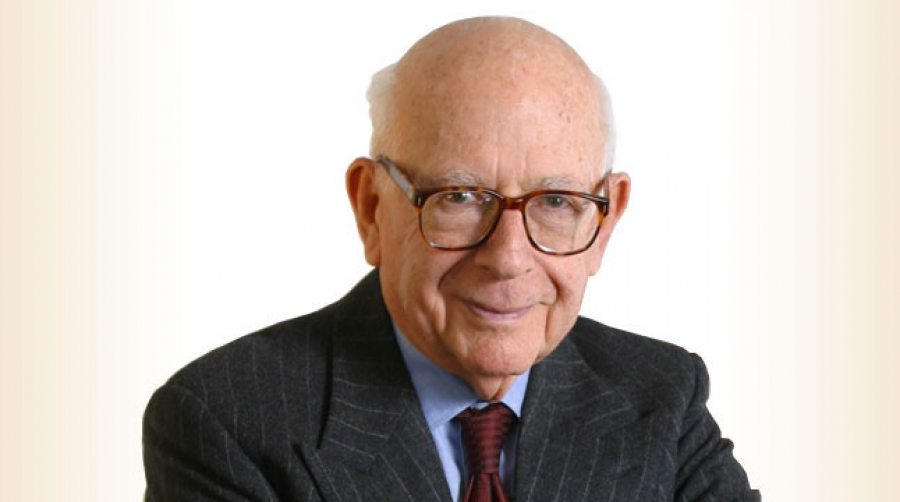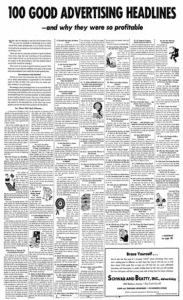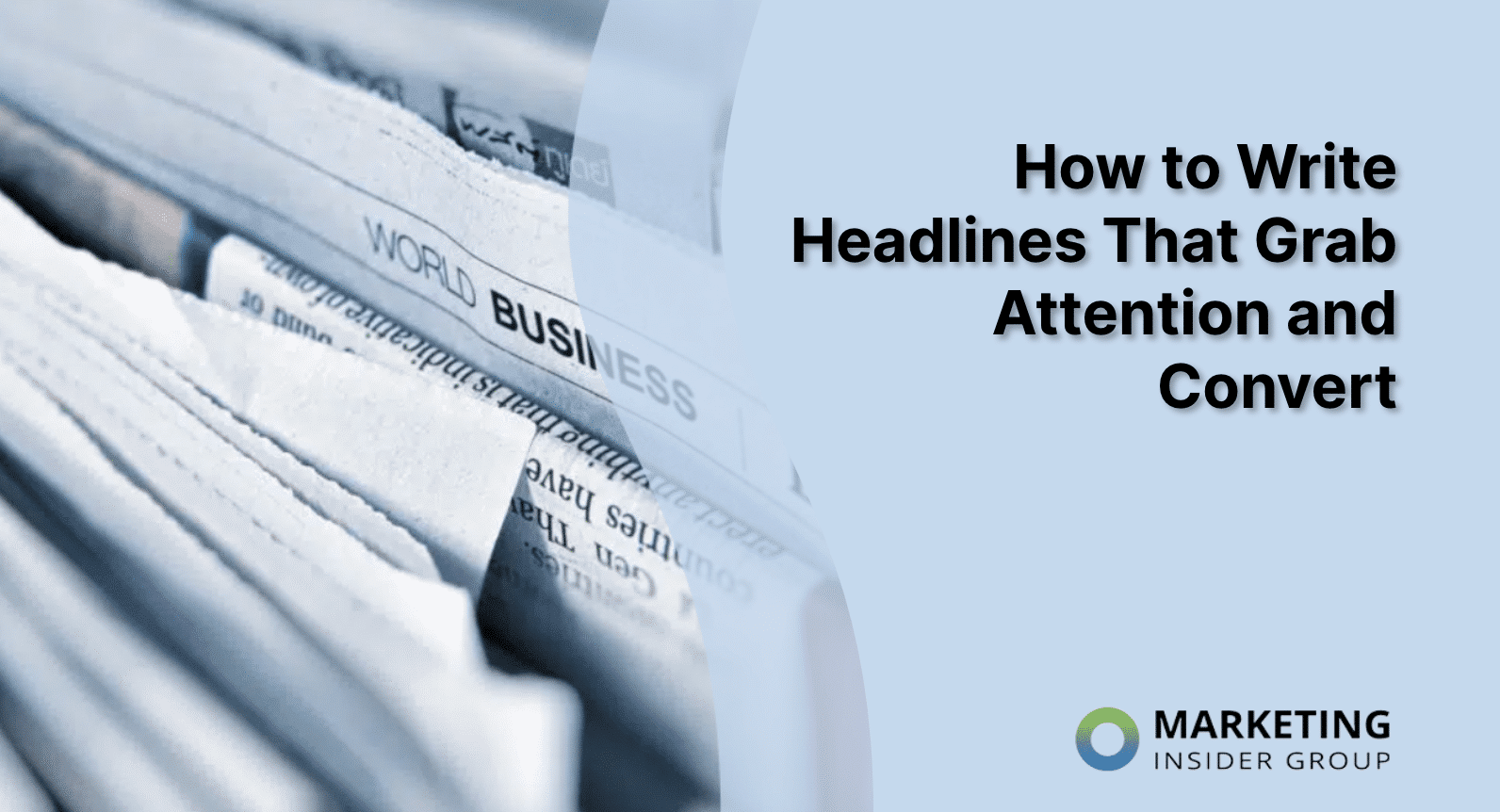
In 1958 A Marketing Legend Revealed These Secrets For Creating Powerful Headlines
The Marketing Legend Who Was Behind the Success of “How to Win Friends…”

Many people don’t know it, but he was the copywriter who helped Dale Carnegie’s How to Win Friends and Influence People become a best-seller.
He was also the man behind the ads for the famous body-builder Charles Atlas.
And he was a copywriting pioneer. He would use coded coupon ads to test and track ads. (The codes enabled him to be able to track which ads the coupon came from, which headlines appeal, etc. was used in that ad, etc.)
Can you imagine what it would be like to sit down with him and learn some of his hard-earned secrets?
Well, the good news is that we can. Because he revealed some of his marketing secrets in a most unlikely place: in an ad itself.
The Amazing Secrets Victor Schwab Revealed in a 2-Page Ad

In 1958, he did something very unusual, something that we should all be grateful for today, because it leaves us an amazing trail to follow.
Not only that, but it secretly provides us with an awesome content marketing example. (I’ll explain what I mean in a little bit.)
What did he do that was so unusual and that benefits us today?
In 1958, Victor Schwab took out a two-page ad that revealed what makes a great headline. The title of his ad was “100 Good Advertising Headlines… and why they are so profitable.”
But he didn’t just reveal 100 examples of what he considered to be the 100 best headlines. He also revealed some powerful truths about headlines.
The Two Attributes of Good Headlines
At the beginning of the ad, Schwab revealed two things that make good headlines…
“There are two principle attributes of good headlines. They select, from the total readership of the publication, those readers who are (or can be induced to be) interested in the subject of the advertisement. And they promise them a worthwhile reward for reading it.” – Victor O. Schwab
Think about those two purposes of a headline:
- To select the people who would be most interested in what you’re advertising
- To promise them a reward for reading the ad
Most people who create ads never do either of those things, let alone both of them.
SOME good copywriters accomplish the first task, but only the GREAT copywriters also accomplish the second.
If we just stopped here and you learned how to master those two things, then your ads would outperform any of your competitors or fellow copywriters.
But Schwab reveals more in the ad…
The Unmatched Power of a Good Headline
If you aren’t convinced that headlines are that important, then you need to pay close attention to what he reveals next. He says…
“Perhaps you’ve read somewhere that 50% of the value of an entire advertisement is represented by the headline itself. Or 75%. Or 80%. The truth is that you cannot possibly evaluate it in percentages.
“For example, what percentage better is an automobile that runs beautifully as compared with one that won’t run at all?
“It’s the same with headlines. One can be almost a total failure in accomplishing its primary purpose: to induce people to start reading the body matter (the copy) of the advertisement.
“Another headline can work almost like magic in enticing readers by the thousands into an ad whose copy moves people to action and thus moves products off the shelves.” – Victor O. Schwab
He went on to reveal some other powerful and little known truths about writing powerful headlines, which I’ll mention in a minute.
But first, I want to show you that this ad wasn’t just powerful teaching about headlines. It was a great example of content marketing.
Copywriter Victor Schwab’s Ad Harnessed the Power of Content Marketing
The purpose of his ad was not just to teach people about how to write great headlines. His purpose was to advertise his advertising agency Schwab and Beatty, INC.
How did he do that? He started with a powerful headline: “100 Good Advertising Headlines… and why they are so profitable.”
But for the majority of the rest of his ad, he used content.
And not just any generic content.
He created amazing content. Content that was so amazing that he hoped people would KEEP the ad for reference!
In fact, he says just that in a box at the bottom of the first page of the ad…
“Brace Yourself… (Title at Top of the Box)
“This is only the first page of a two-page “article” about advertising. Since everyone’s reading speed is different we don’t know how long it will take you to read these 7,500 words. But we hope that you will find these two pages sufficiently interesting and informative to justify reading them all in full; that you will consider the time well spent; and that you might even want to keep them for future reference.”
(At the bottom of this box it reads…)
Schwab and Beatty, Inc., Advertising
488 Madison Ave | New York City 22
Radio and Television Department | 510 Madison Ave
Member of American Association of Advertising Agencies
Now, why would he hope that they’d keep the ad?
Because if they kept the ad, then they would always have the name of HIS advertising agency right there in front of them!
Lesson #1 for Content Marketers
Create content that is so powerful, so insightful, and so helpful that your prospects actually want to keep it and continually refer to it.
Now obviously, you can’t do that with every piece of content you create. But have created ANY content that falls into that category?
Make this your litmus test to determine if you’ve created any content that will stand out from the rest of the “me too” content that’s all over the internet.
When I came up with my 21 Types of Content We Crave infographic, I unintentionally did this. But I can’t tell you how many times people have told me that they’ve taken that infographic, printed it out, and keep it on their desk.
But there’s another content marketing lesson we can learn from Victor Schwab that I don’t want you to miss…
Lesson #2 for Content Marketers
Create the most in-depth, thorough content that you can.
I want you to notice that Victor Schwab didn’t just create a list of 3 headlines, or 10 headlines, or even 20 headlines. No! He gave us a list 100 headlines!
Why is it important that you create thorough content like this? There are four reasons:
- Search engines like it (at least they currently do)
- You want your content to stand out.
- You want it to be worth keeping.
- It will attract your ideal prospects.
Let me explain the fourth reason, because I think it’s an often overlooked reason.
I’ve been thinking a lot about creating long, thorough content vs brief, shorter content and I’ve come to realize that it’s the same debate people used to have about long copy vs. short copy.
And I’ve realized the reason that you need to create in-depth content is because the people who will actually consume it from beginning to end are the people who care most about the solution your content is offering.
As Howard Gossage (1917 – 1969), who was an advertising innovator during the “Mad Men” era, once said…
“The real fact of the matter is that nobody reads ads. People read what interests them, and sometimes it’s an ad.”

That means that in-depth, thorough content will repel the people who don’t care about (or need) what your content is focused on. But it will attract the people who are passionate about (or crave), what your content is about.
Neil Patel is someone that understands the power of creating in-depth and thorough content. In fact, he has built his career and businesses by creating this type of content. He is the living proof that this kind of long-form content is important and powerful!
Again, I am not suggesting that every piece of content you create is like this. But you should create SOME content that’s like this.
Powerful, Little-Known Truths About Writing Powerful Headlines Schwab Revealed
As I said, besides the 100 headlines and his teaching about why each one is so powerful, Schwab peppered his ad with some more secrets about powerful headlines.
He shared things like:
- The Sole Purpose of a Headline
- The Kind of Rewards Good Headlines Promise
- The Attraction of the Specific in Good Headlines
- Whether “Negative” Headlines Should Be Used or Not
- The Importance of Subheads (He uses a REALLY cool analogy for them)
- Some Ways to Use Subheads More Effectively
- The Importance of Your First Paragraph
Do see how much incredible content Schwab included in this ad? Like I said, he didn’t skimp on the quality or the quantity of information.
That’s why I said that his ad wasn’t just an amazing piece example on how to create headlines, but also how to create unbelievably powerful content marketing.
The Incredible Way He Ended This Amazing Ad
After sharing all of this amazing information on headlines, Schwab ends the ad with a box. And it’s in this box, that I believe his copywriting skills really shine.
His exact wording is the most powerful, yet softest “soft sell,” you’ll probably ever see. But it is still PACKED with so much powerful “proof” that it had to have swayed any ideal prospect.
Check out what it says for yourself below. (His words are bolded and I have included my comments on his copy in-between the paragraphs.)
This is About Us… But May Interest You (Title)
“This is the age of specialization… and for 30 years we have been specialists. We are an advertising agency specializing in the preparation of couponed advertisements whose purpose is to produce an immediate reply going to the advertiser himself.
My Translation: We specialize in getting your businesses results: prospects contacting you directly.
“The quantity and the quality of this response is vital to our clients, regardless of whether it be followed up by their salesmen or sales literature alone.
My Translation: You don’t have to deal with these prospects yourself. You can get others to do it or you can use sales literature to do that (which I am sure he created for them, for an additional cost).
“An agency specializing in such advertising must prove, day after day, it is doing a good job. Its clients key each advertisement and keep records of the response each produces. If these results demonstrate the ability of the agency its clients may retain it for years. If not, the relationship is obviously likely to be short-lived.
My Translation: We prove our work every day to businesses that are checking for regular results. If we didn’t prove our work with results, then they would not continue to work with us.
“It is significant, therefore, that our clients have expended more than 77 million dollars for such advertising; that some of them are the largest and best known advertisers in their fields; and that many of them have been with us since the foundation of this agency thirty years ago.”
My Translation: How good are the results we produce? The largest and best known advertisers have spent $77 million with us and stayed with us 30 years. How good do you think our results must be?
Schwab and Beatty, INC., Advertising
488 Madison Ave | New York City 22
Radio and Television Department | 510 Madison Ave
Member of American Association of Advertising Agencies
My Translation: We’re obviously a legitimate and respected agency; otherwise, we wouldn’t be a part of this association.
Why Schwab Left Out a Key Copywriting Element Every Top Copywriter Uses
The most amazing thing that I noticed is that he LEAVES OUT a “call to action” at the end of his ad. As a top copywriter, he knew how important “calls to action” are to creating effective copy.
So WHY would he choose to leave this out? I don’t have proof for this, but I THINK the reasons he left out the “call to action” are:
- His goal was to create helpful content that would subtly, but powerfully, influence his audience to: like him, want to work with him, and prove his immense knowledge and unique ability.(The goal that every content marketer has.)
- By NOT including a “call to action,” it removed any feeling on his prospect’s part of being sold to. (He must have wanted them to think something like, “Sales letters have ‘calls to action.’ This doesn’t have one. Therefore, it must not be a sales letter, so I don’t have to put my guard up.”)
- By NOT asking for them to work with him, he was playing “hard to get” which, in the context of this ad, was more powerful than having a “call to action.”
Want to know how we here at Marketing Insider Group create headlines that grab attention and convert every time? Read this: How to Write Irresistible, Intriguing Headlines






